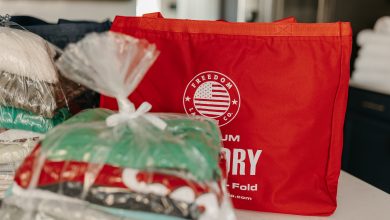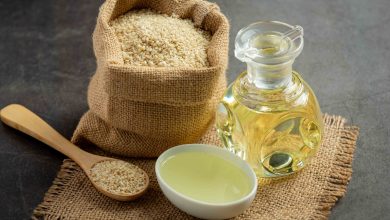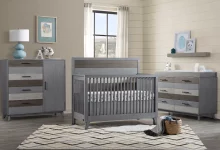Coping with Cold Weather Plumbing Emergencies

As the chilly winds of winter start to set in and emergency plumbing becomes a concern, the beauty of the season often brings along a less appealing side effect: the increased risk of frozen pipes and sudden leaks. Cold weather plumbing emergencies can be a nightmare for homeowners, leading to costly repairs and potential water damage. This comprehensive guide delves into the causes, prevention, and coping strategies for dealing with frozen pipes and sudden leaks during the frosty months. Read on to learn how to safeguard your home and ensure your plumbing system remains intact even when the mercury takes a nosedive.
Understanding the Culprits: Why Do Pipes Freeze and Leak?
When temperatures plummet, the water inside your pipes can freeze, leading to expansion and potential pipe bursts. The culprits behind this phenomenon include inadequate insulation, poor circulation, and exposure to frigid air drafts. Furthermore, sudden temperature fluctuations can weaken pipes, making them vulnerable to leaks and ruptures. To effectively tackle these cold weather plumbing challenges, it’s essential to comprehend the science behind frozen pipes and leaks.
Prevention is Key – Shielding Your Pipes from the Cold
- Insulate Exposed Pipes: Identify vulnerable areas in your home where pipes are exposed to cold air, such as attics, basements, and crawlspaces. Apply insulation sleeves or wraps to keep these pipes warm and reduce the risk of freezing.
- Maintain Adequate Heat: Ensure your home is heated evenly, especially in areas where pipes are situated. Keep your thermostat at a consistent temperature, even when you’re away, to prevent drastic temperature fluctuations.
- Seal Air Leaks: Check for drafts around windows, doors, and other openings, which can lead to cold air infiltration. Properly sealing these gaps will help maintain a warmer environment and reduce the chances of frozen pipes.
- Let Faucets Drip: Allowing faucets to drip slightly during extremely cold nights can help relieve pressure buildup and prevent pipes from freezing. Moving water is less likely to freeze than stagnant water.
Coping with Emergencies – Steps to Take When Disaster Strikes
- Shut Off Water Supply: In the event of a sudden leak or burst pipe, the first step is to locate your main water shut-off valve and turn it off. This will help minimize water damage while you address the issue.
- Open Faucets: After shutting off the water supply, open the faucets to relieve pressure and empty the pipes. This can prevent further bursts and leaks until professional help arrives.
- Call a Licensed Plumber: While DIY solutions might seem tempting, it’s best to enlist the expertise of a licensed plumber when dealing with frozen pipes and leaks. They have the experience and tools to thaw frozen pipes and make necessary repairs safely.
- Use Heat Sources Carefully: If you’re attempting to thaw frozen pipes yourself, avoid using open flames or high heat sources, as they can damage pipes or even fire. Instead, use a hairdryer or heat lamp at a safe distance.
Additional Tips for Cold Weather Plumbing Preparedness
- Keep Cabinet Doors Open: If pipes are under sinks, especially those against exterior walls, leave the cabinet doors open to allow warm air from your home to circulate the pipes. This simple step can go a long way in preventing freezing.
- Insulate Outdoor Faucets: Remember outdoor faucets, as they are particularly susceptible to freezing. Install faucet covers or wrap them with insulation to protect them from the cold.
- Drain Outdoor Systems: Drain, drain, and disconnect hoses from outdoor spigots before the cold weather sets in. If you have an irrigation system, it’s essential to drain it properly to prevent freezing and potential damage.
- Invest in Pipe Heating Cables: Consider pipe heating cables for areas especially prone to freezing. Electrically-powered cables can be wrapped around pipes to provide consistent heat and prevent freezing.
- Monitor Your Water Pressure: Monitor your water pressure during cold spells. If you notice a significant drop in water pressure, it could signify a frozen pipe. Address the issue promptly to prevent a burst pipe.
- Use Thermostatic Radiator Valves: If you have a radiator heating system, consider installing thermostatic radiator valves. These valves allow you to control the temperature in individual rooms, preventing overly cold conditions that could lead to frozen pipes.
- Create a Winter Vacation Plan: If you plan to be away from home during the winter, take extra precautions. Set your thermostat to a warm enough temperature to prevent freezing, even when you’re not there.
- Regularly Check for Leaks: Keep an eye out for any signs of leaks, no matter how minor they may seem. Addressing small leaks promptly can prevent them from becoming larger, more expensive problems.
Quick Action Steps for Sudden Leaks
- Contain the Leak: Place buckets, towels, or absorbent materials under the leak to prevent water from spreading and causing further damage.
- Turn Off Electronics: If the leak is near electrical outlets or appliances, turn off the electricity in that area to prevent the risk of electrocution.
- Patch Small Leaks Temporarily: For minor leaks, use plumbing tape, epoxy putty, or a rubber patch to create a temporary seal until a professional plumber can assess and repair the issue.
- Use a Pipe Clamp: If the leak comes from a visible pipe joint, you can use a pipe clamp to stop or minimize the leak.
- Evacuate If Necessary: If the leak is extensive and causing significant damage, especially in multi-story buildings, consider evacuating until the issue is resolved to ensure your safety.
Conclusion
As temperatures drop and winter takes hold, being prepared for the possibility of frozen pipes Katy and sudden leaks becomes crucial. By implementing these additional tips, you can bolster your cold-weather plumbing preparedness and enhance your ability to cope with unexpected emergencies. Remember, a proactive approach and quick action can make all the difference in preventing costly repairs and safeguarding your home during the frosty months. Stay informed, stay vigilant, and ensure your plumbing system remains resilient and functional despite cold weather challenges.








